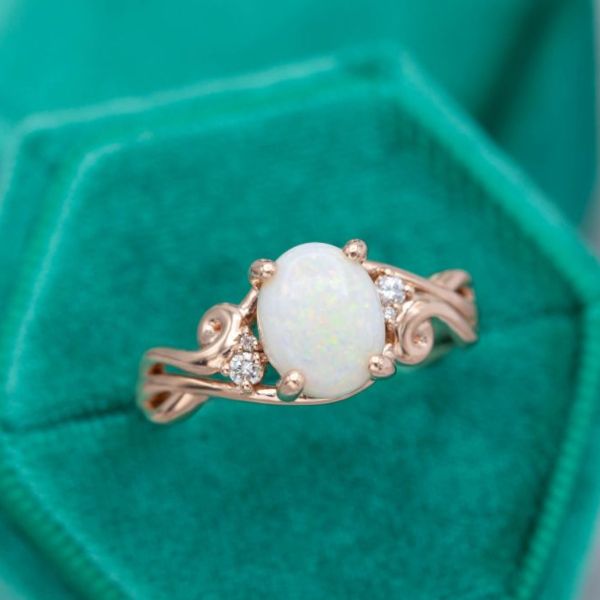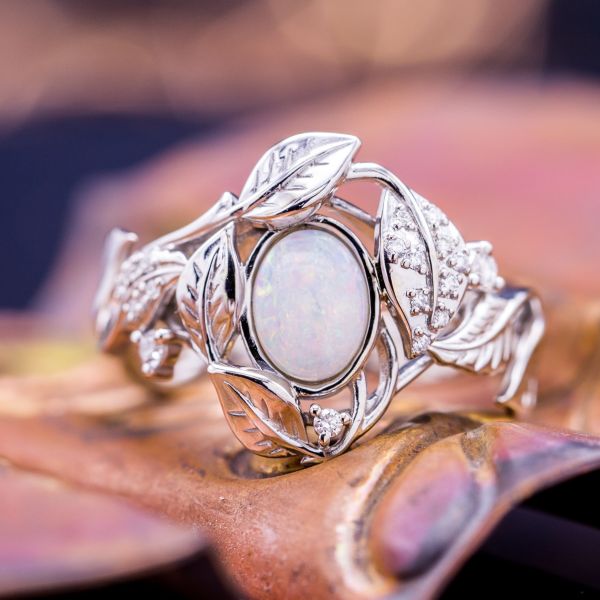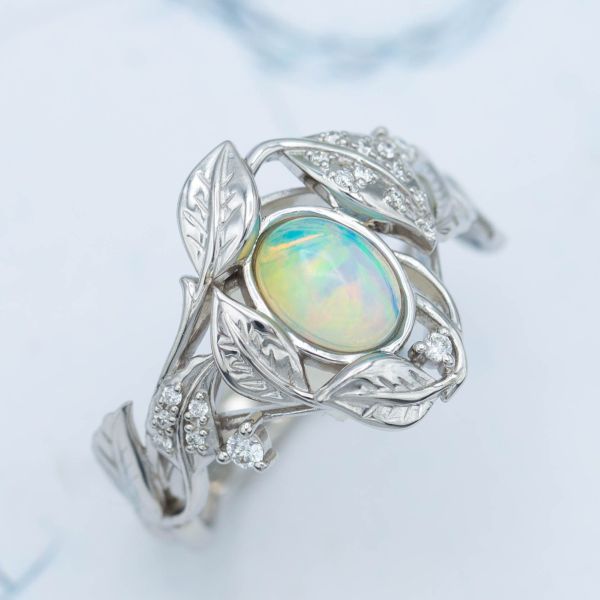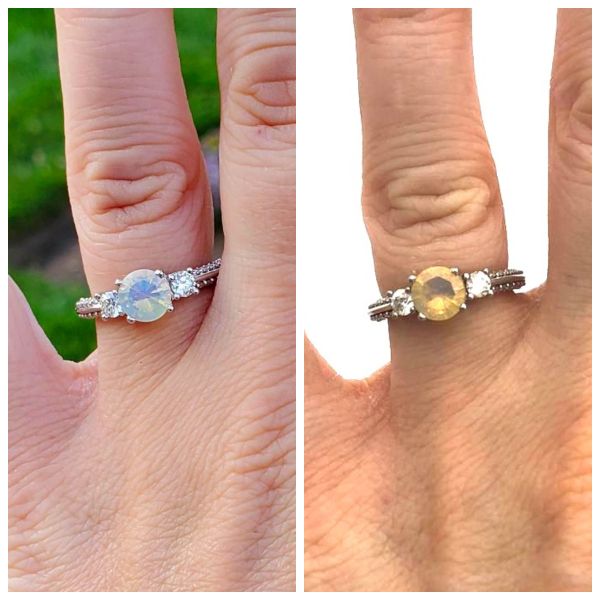Gemstone Knowledge
Australian Opal vs. Ethiopian Opal
Where do opals come from? How does country of origin relate to appearance and durability?
Where does opal come from?
Opal forms slowly over millions of years in layers of sedimentary rock. Precious opal can be found primarily in five countries: Australia, Ethiopia, Mexico, Brazil, and the United States. That said, all five countries don't produce equally. Mexico is best known as the source of the distinctive opal variety known as Fire Opal. But Australia and Ethiopia are the two opal sources you'll encounter most often.
Australian Opal
Australia is the world capital of opal production. The Aussie government estimates that it has historically produced 95% of the world's precious opal for jewelry.
Ethiopian Opal
Ethiopia burst onto the opal scene in 2008, when a major opal source was found in volcanic rocks near the village of Wegel Tena. These opals, often referred to as Welo opals after the Wollo Province where they are mined, have become a small but growing piece of the precious opal market.
Comparing Appearance
Australian opal has long been the industry standard and comes in all varieties, including the white opal that's most common in the US market and black opal, which is the most valuable.
Ethiopian Welo opal comes primarily in white and crystal varieties, both with strong play of color. In fact, the play of color (meaning the flashes of blue, green, and other colors that dance across an opal's surface) is stronger on average than what is seen in Australian white opals. This color play is what got the world excited about Ethiopian opal.
These two examples show the classic character of these two types of opals. We initially set a more subdued Australian opal in this ring, and then substituted the more vibrant Ethiopian opal shown on the right.
Comparing Wearability
The primary downside of Ethiopian opal is that most of it is hydrophane, meaning that it will readily absorb water and chemicals. When just water is absorbed, the stones become almost completely transparent. This temporary change in appearance reverses as the opal dries back out. The problem is that chemicals, dirt, and oils tend to cause permanent changes, staying in the stone once absorbed to cause clouding and loss of color play. Australian opals are much less susceptible to these issues, though they can be damaged by chemicals or crack if they get too dried out.
The image below shows an example one of our customers shared with us. In a matter of just a few months, the faceted Ethiopian opal in her engagement ring turned brown and lost much of its fire, likely because it absorbed water and other chemicals, some of which stayed in the stone and caused its discoloration. A heartbreaking outcome for such an important ring, and we're expecting much more longevity for the Australian opal we put in its place!
Comparing Price
Fine opal is an affordable option relative to alternatives like diamond and sapphire. Our Australian white opal typically sells for $150-400, while rarer and more valuable Australian black opal typically sells for $500-4,000. Ethiopian opal from the past decade is plentiful and has yet to establish a huge amount of customer demand, making it less expensive. Beautiful Ethiopian opal can be so cheap that it seems as if you've found a secret bargain! In fact, we've found there's good reason for the lower price—poorer durability.
Our recommendation: Australian Opal
Opal can make a great stone for an engagement ring or other piece of fine jewelry. However, wearability is of critical importance. Regardless of origin, all opals are soft and need to be handled carefully to avoid scratches, cleaving, and other damage. Because of this, we recommend opals that are more likely to hold up to daily wear.
Our experience with Ethiopian opal suggests that it is not as durable and, as a result, not a good choice for most customers. We've had numerous customers that thought they could keep Ethiopian opals safe come back later looking to have their Welo opal replaced. We sell far more Australian opal, yet cases of customers looking for repair or replacement are far fewer. And when it comes to appearance, there's enough quality and variety from other origins that you should be able to find the perfect look. We're confident of finding the right look for any of our customers from among the Australian opals in our collection
About CustomMade
CustomMade designs and creates one-of-a-kind, custom engagement rings and fine jewelry. Each piece we create is inspired by you, designed for you, and made just for you.



